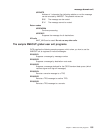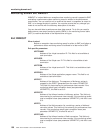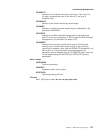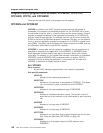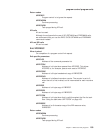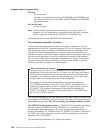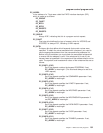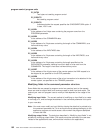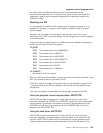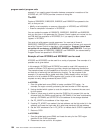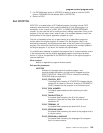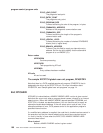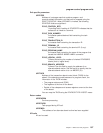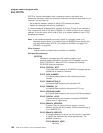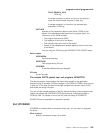An output field is modified by altering the data that is pointed to by the
command-level parameter list. In the case of an output field you can modify the
application’s data in place, because the application is expecting the field to be
modified anyway.
Modifying the EID
It is not possible to modify the EID to make major changes to requests. It is not
possible, for example, to change a LINK request to a different type of Program
Control request.
However, you can make minor changes to requests, such as to turn on the
existence bit for SYSID so that the request can be changed into one that is shipped
to a remote system.
The list that follows shows the bits in the EID that can be modified. Any attempt to
modify any other part of the EID is ignored.
PC_BITS1
X'40' The existence bit for the COMMAREA
X'20' The existence bit for LENGTH
X'10' The existence bit for INPUTMSG
X'08' The existence bit for INPUTMSGLEN
X'04' The existence bit for DATALENGTH
X'02' The existence bit for SYSID
X'01' The existence bit for TRANSID.
PC_EIDOPT5
Not used for a PC link request.
Bits in the EID should be modified in place. You should not modify the pointer to the
EID. (Any attempt to do so is ignored by CICS.)
The EID is reset to its original value before return to the application program. That
is, changes made to the EID are retained for the duration of the program control
request only.
Your user exit program is prevented from making major changes to the EID.
Using the program control request token, UEPPCTOK
UEPPCTOK provides the address of a 4-byte area that you can use to pass
information between the XPCREQ and XPCREQC user exits for the same program
control request. For example, the address of a piece of storage obtained by the
XPCREQ user exit, which has to be freed by the XPCREQC user exit, can be
passed in the UEPPCTOK field.
Using the task token UEPTSTOK
UEPTSTOK provides the address of a 4-byte area that you can use to pass
information between successive program control requests in the same task. (By
contrast, UEPPCTOK is usable only for the duration of a single program control
request, because its contents may be destroyed at the end of the request.) For
program control program exits
Chapter 1. Global user exit programs 163



